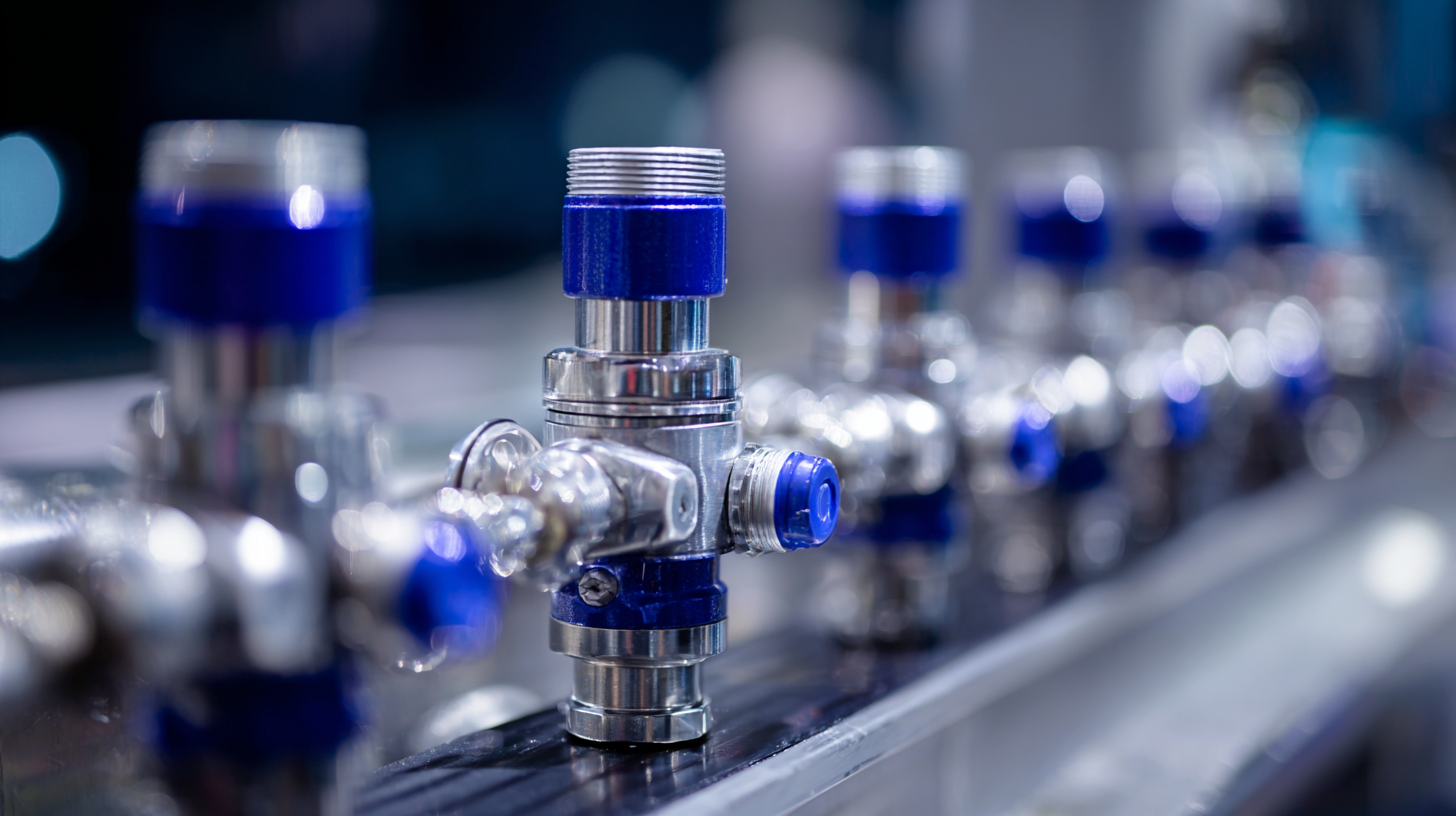As we look towards 2025, the landscape of wafer valves is evolving rapidly, shaped by technological advancements and changing market demands. Wafer valves, known for their compact design and lightweight characteristics, are increasingly becoming a preferred choice for global industries due to their efficiency and cost-effectiveness. This blog delves into the emerging trends that global buyers should be aware of, from innovations in materials and manufacturing processes to the growing emphasis on sustainability and energy efficiency. Understanding these dynamics will be crucial for stakeholders looking to navigate the complexities of the wafer valve market in the coming years. Join us as we explore how these trends will impact procurement strategies and operational processes, ensuring that buyers remain ahead in this competitive field.

The wafer valve industry is rapidly evolving, driven by emerging global standards that are set to shape its future by 2025. One of the most significant trends is the push for greater sustainability and energy efficiency. Regulatory bodies across various regions are establishing stricter requirements that mandate manufacturers to adopt eco-friendly materials and production processes. As global stakeholders increasingly prioritize reducing carbon footprints, wafer valves are being designed with advanced features that minimize energy consumption and promote recyclability.
Another critical development is the rise of digital technologies in valve manufacturing and management. Internet of Things (IoT) integrations and smart monitoring systems are becoming essential for ensuring optimal performance and reliability. These technologies not only enhance user experience but also facilitate predictive maintenance, reducing downtime for industries that rely on wafer valves. Global buyers looking to invest in wafer valves must stay attuned to these advancements to ensure compliance and optimize their operations, making it crucial to engage with suppliers who are aligned with these future-oriented standards.
The wafer valve industry is undergoing significant innovation, particularly in design and functionality, setting the stage for remarkable enhancements in efficiency and reliability. One of the most notable trends in wafer valve design is the adoption of lightweight materials, such as advanced composites and alloys, which not only reduce the overall weight of the valves but also improve their resistance to corrosion and wear. This material advancement translates to longer service life and lower maintenance costs, making them more appealing to global buyers looking for long-term solutions for their fluid management needs.
Another key innovation is the integration of smart technology into wafer valve systems. With the rise of the Internet of Things (IoT) and automation, modern wafer valves are being equipped with sensors and actuators that enable real-time monitoring and remote control. This capability allows operators to optimize valve performance, detect potential issues early, and reduce downtime. As industries strive for greater operational efficiency, these smart wafer valves are becoming essential tools for achieving higher performance standards while ensuring reliability in various applications, from water treatment to industrial processing.
As the demand for efficient and reliable flow control solutions escalates, the wafer valve market is poised for significant growth in the coming years. According to a recent report by MarketsandMarkets, the global wafer valve market is projected to reach USD 2.7 billion by 2025, growing at a compound annual growth rate (CAGR) of 4.8% from 2020. This growth is largely driven by the increasing industrial applications in sectors such as oil and gas, water and wastewater treatment, and chemical manufacturing.
In particular, the adoption of wafer valves in the pharmaceutical and food processing industries is expected to surge, as these sectors prioritize hygiene and compliance with stringent regulatory standards. A report by Grand View Research indicates that the pharmaceutical segment alone is expected to account for over 30% of market demand by 2025. Moreover, innovations such as the development of lightweight and compact designs, along with enhanced sealing technologies, are paving the way for wafer valves to become the preferred choice for global buyers looking for versatility and reliability in their operations.

As we look towards 2025, the wafer valve market is set to evolve, driven by critical materials and technologies that are enhancing performance metrics. According to a recent report from MarketsandMarkets, the global wafer valve market is projected to reach $9 billion by 2025, showing a significant compounded annual growth rate (CAGR) of 5.8%. This growth is largely attributed to advancements in materials such as high-performance polymers and exotic alloys, which are increasingly utilized to enhance durability and corrosion resistance. These innovations ensure that wafer valves can withstand extreme conditions, making them suitable for various industrial applications, including oil and gas, water treatment, and pharmaceuticals.
Moreover, advancements in manufacturing technologies, such as additive manufacturing and precision machining, play a pivotal role in improving the efficiency and performance of wafer valves. According to a study by Grand View Research, the demand for automated and smart valves is anticipated to drive market growth, with an expected increase in their adoption across sectors like energy management and process automation. The integration of IoT technology into wafer valves not only allows for real-time monitoring but also facilitates predictive maintenance, leading to reduced downtime and operational costs. As global buyers prepare for the upcoming trends, understanding these material and technological advancements will be crucial for making informed purchasing decisions.
This chart illustrates the expected performance improvements in wafer valves driven by critical materials and technologies. The data shows the projected enhancements in various performance metrics by 2025, highlighting the importance of innovation in this sector.
Selecting the right wafer valve supplier in 2025 is critical for global buyers looking to enhance their operational efficiency and product reliability. With advancements in materials and manufacturing processes, buyers must prioritize suppliers who invest in innovative technologies and adhere to industry standards. It is essential to evaluate a supplier's technical capabilities and their track record in delivering quality products. Engaging suppliers that offer customization options can also provide significant benefits, as tailored solutions often better meet specific project requirements.
Furthermore, strong communication and after-sales support are vital factors in choosing a wafer valve supplier. Establishing a partnership with a supplier that values customer relationships and provides comprehensive technical assistance ensures that any issues can be promptly addressed. Prospective buyers should seek testimonials and reviews from previous clients to gauge the supplier's reliability and service quality. Additionally, considering suppliers who prioritize sustainability and eco-friendly practices can align with the growing demand for responsible manufacturing, making them a preferred choice in the burgeoning market for wafer valves.




Same Day Shipping
ISO Certified Production